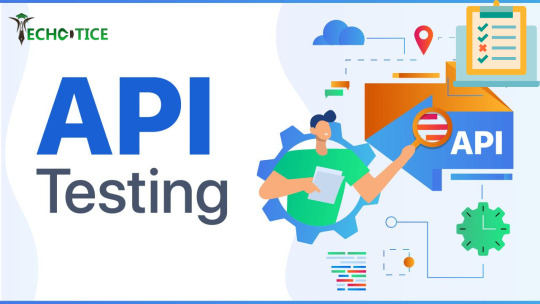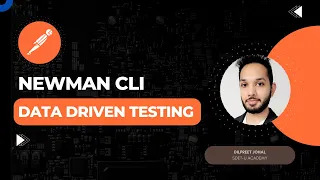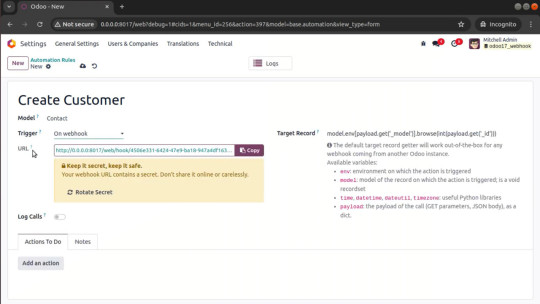#postman tutorial for automation
Explore tagged Tumblr posts
Text

#postman#postman tutorial#Postman Tutorial Beginners#postman tutorial for automation#postmantutorial#api#api testing#api testing courses online#api testing using postman
0 notes
Text
AI Automated Testing Course with Venkatesh (Rahul Shetty) Join our AI Automated Testing Course with Venkatesh (Rahul Shetty) and learn how to test software using smart AI tools. This easy-to-follow course helps you save time, find bugs faster, and grow your skills for future tech jobs. To know more about us visit https://rahulshettyacademy.com/
#ai generator tester#ai software testing#ai automated testing#ai in testing software#playwright automation javascript#playwright javascript tutorial#playwright python tutorial#scrapy playwright tutorial#api testing using postman#online postman api testing#postman automation api testing#postman automated testing#postman performance testing#postman tutorial for api testing#free api for postman testing#api testing postman tutorial#postman tutorial for beginners#postman api performance testing#automate api testing in postman#java automation testing#automation testing selenium with java#automation testing java selenium#java selenium automation testing#python selenium automation#selenium with python automation testing#selenium testing with python#automation with selenium python#selenium automation with python#python and selenium tutorial#cypress automation training
0 notes
Text
Best Practices for Custom Software Development Services

Introduction
In today's fast-paced business world, off-the-shelf software often isn’t enough. Custom Software Development Services allow businesses to create apps tailored specifically to their unique challenges. This tutorial will guide you through best practices to ensure that your custom software development project runs smoothly and delivers the results you need.
Materials Needed:
A software development tool or IDE (Integrated Development Environment)
Project management tools (e.g., Jira, Trello)
Testing tools (e.g., Selenium, Postman)
Robotic Process Automation (RPA) software (e.g., UiPath, Automation Anywhere)
Step 1: Identify Business Goals and Challenges
Goal:
Before diving into software development, define the problems you want to solve. Are you looking to automate workflows, improve data accuracy, or integrate multiple systems? Understanding your core challenges is crucial to designing the right solution with Custom Software Development Services.
Challenges Custom Software Can Solve:
Streamlining Operations: Increase efficiency across processes.
Automating Tasks: Eliminate repetitive tasks to save time.
System Integrations: Connect existing systems to improve workflow.
Data-Driven Decision Making: Use accurate data to make better business decisions.
Tip:
Involve key stakeholders across different departments early on to understand the full scope of the issues you're facing. This will help you design a solution that fits the broader business needs.
Mini Task:
Take a moment to create a list of your top three business challenges. Identify how custom software could help address these issues.
Step 2: Define Software Features and Functionality
Goal:
Now that you’ve identified your challenges, it’s time to define the features your custom software should have. These features should be essential for solving your business’s problems.
Key Features to Consider:
User Authentication: Secure login systems and data protection.
Data Analytics: Easily generate reports and gain insights.
Automation: Automate manual tasks to save time and reduce errors.
Cross-Platform Compatibility: Ensure your app works across mobile and desktop devices.
Tip:
Involve your end users early in the feature definition phase. Collect feedback to ensure the final product aligns with their expectations.
Mini Task:
Create a simple wireframe of the software’s main interface. Think about which features (e.g., login screen, data dashboards) should appear on the first page.
Step 3: Choose the Right Development Methodology
Goal:
The development methodology you choose can significantly impact your project’s success. Here are two popular approaches for Custom Software Development Services:
Agile Development: Best for iterative, flexible development and frequent feedback loops.
Waterfall Development: Ideal for projects with fixed requirements and clear timelines.
Warning:
Agile is better suited for complex projects that require flexibility, while Waterfall works best for projects with clear, fixed requirements. Choosing the wrong methodology can result in delays or scope creep.
Tip:
Work closely with your development team to select the methodology that best fits your project’s specific needs.
Mini Task:
If you’re unsure, have a discussion with your team to choose the methodology that best aligns with your project scope and timeline.
Step 4: Collaborate with Your Development Team
Goal:
Effective collaboration and communication are key to any successful Custom Software Development project. Here are some tips:
Regular Meetings: Hold frequent check-ins to track progress.
Provide Feedback: Offer constructive feedback throughout the development cycle.
Continuous Testing: Keep testing your software at every stage.
Tip:
Use project management tools like Jira or Trello to track progress and streamline communication.
Mini Task:
Set up a shared Trello board for your team, breaking down the project into smaller tasks that can be tracked and assigned.
Step 5: Testing and Quality Assurance
Goal:
Before launching, make sure to test everything thoroughly. Focus on these key areas:
Functionality: Does everything work as intended?
Usability: Is the software intuitive for users?
Security: Are there any vulnerabilities?
Performance: Can the software handle heavy usage?
Tip:
Testing should be continuous. Don't wait until the end—catch issues early to avoid headaches down the road.
Warning:
Skipping or rushing the testing phase can result in a poor user experience and costly post-launch fixes.
Real-Life Example:
In a recent project, we tested user authentication across multiple devices to ensure consistency. We found issues with mobile browsers, which we fixed before launch.
Mini Task:
Set up a simple test case to check basic login functionality. Test on mobile and desktop browsers to ensure compatibility.
Step 6: Deployment and Ongoing Maintenance
Goal:
Once testing is complete, it’s time to launch. But the work doesn’t end there. To ensure your software continues to meet business needs, you’ll need regular updates and maintenance.
Tip:
Set up automated monitoring tools to track system performance post-deployment. This allows you to quickly identify and resolve issues before they affect users.
Mini Task:
Set up a basic monitoring tool (e.g., Google Analytics for app performance) to start tracking user activity and software health.
Step 7: Enhance Efficiency with RPA
Goal:
After your software is live, consider integrating Robotic Process Automation (RPA). RPA can automate repetitive tasks, freeing up time for more valuable activities. This integration can help boost productivity and efficiency.
Mini Task:
Explore an RPA tool (e.g., UiPath or Automation Anywhere) and experiment with automating a simple repetitive task.
Conclusion
By following these best practices, you can create a custom software solution that perfectly fits your business needs. Focus on your business goals, collaborate with your development team, and rigorously test your software to ensure success. Additionally, integrating RPA can enhance efficiency and make your custom software even more powerful.
0 notes
Text
Why Is QA Placement Training So Popular Among Fresh Graduates
In the ever-evolving tech industry, Quality Assurance (QA) has become a vital component of software development and product delivery. With businesses increasingly reliant on digital platforms and applications, the need for delivering flawless products has never been more critical. This demand is fueling the popularity of QA placement training programs, particularly among fresh graduates seeking to kickstart their careers in IT.
But what makes QA training such an appealing choice? Why are so many recent graduates enrolling in these programs? This blog delves deep into the reasons why QA placement training has become a go-to option for newcomers in the tech industry.
1. Bridging the Gap Between Academia and Industry
One of the main reasons QA placement training is so popular among fresh graduates is that it closes the gap between academic learning and real-world applications. Many graduates leave college with theoretical knowledge but lack hands-on experience in testing tools, agile workflows, and bug-tracking systems.
QA placement training provides:
Real-time project experience
Exposure to automation and manual testing tools
Practical knowledge of software development lifecycles (SDLC and STLC)
Soft skills and job interview preparation
This practical focus ensures that participants can confidently enter the job market with in-demand skills.
2. High Demand for QA Professionals
Quality Assurance is no longer just about finding bugs. It’s a strategic role that contributes to:
Improved user experience
Faster time to market
Enhanced product quality
Brand reputation
With the global focus on digital transformation, QA professionals are in high demand across industries such as finance, healthcare, e-commerce, and education. Even startups and small businesses are prioritizing QA to ensure competitive delivery.
According to recent IT hiring reports, QA testers rank among the top 10 most-hired roles in technology. This high demand creates immense opportunities for graduates to land their first job after training.
3. Career Entry Without Coding Prerequisites
Unlike software development roles, QA positions do not always require strong programming skills. Fresh graduates from non-CS backgrounds, like mechanical, civil, or even business streams, can enter the QA field through training.
Many QA training programs offer:
Introductory modules on testing basics
Optional coding tutorials for those interested in automation testing
Step-by-step guidance on tools like Selenium, JIRA, Postman, and TestNG
This flexibility opens the door for a diverse group of learners who want to transition into IT without a steep learning curve.
4. Cost-Effective and Time-Efficient Career Path
Another reason why QA placement training is gaining popularity is that it’s a fast-track route to employment. Unlike lengthy graduate programs or expensive bootcamps in programming or data science, QA training:
Lasts between 8 to 16 weeks
It is offered at affordable prices
Comes with job placement assistance
This makes it an attractive option for fresh graduates who want quick ROI (Return on Investment) without compromising on career prospects.
5. Structured Learning with Mentorship and Support
Fresh graduates often feel overwhelmed when learning new technical concepts on their own. QA training institutes offer a structured curriculum, often designed by industry veterans. These programs usually include:
Instructor-led sessions
Mentorship from real QA professionals
Mock interviews
Resume and LinkedIn profile reviews
Such guidance reduces anxiety, builds confidence, and accelerates learning. Graduates benefit from a clear roadmap, which is especially important when entering a competitive job market.
6. Exposure to Both Manual and Automation Testing
One of the greatest advantages of QA training is that students gain exposure to both manual and automation testing two major pillars of software quality assurance.
Manual Testing
Involves writing and executing test cases
Understanding functional requirements
Identifying UI/UX issues
Using bug tracking tools like JIRA or Bugzilla
Automation Testing
Learning tools like Selenium, TestNG, or Postman
Writing test scripts in Java or Python
Integrating with CI/CD pipelines
Enhancing testing speed and accuracy
Training helps students decide their preferred path, whether to remain in manual QA roles or transition into automation or even DevOps later.
7. Opportunity for Career Growth and Specialization
QA is not a dead-end job, contrary to some misconceptions. In fact, career paths within QA are varied and rewarding. After gaining experience, professionals can move into:
Automation Engineer
Performance Tester
Security Tester
QA Lead or Manager
Test Architect
DevOps or SDET (Software Development Engineer in Test)
For fresh graduates, QA is a solid foundation that opens up numerous paths depending on one’s interest and skill development.
8. Built-In Placement Support and Internships
One of the strongest attractions for fresh graduates is the job placement assistance that comes bundled with QA training. Reputed training providers offer:
Mock interviews with real-time feedback
Resume optimization
Job portal access
Interview scheduling and referrals
Internship opportunities with real companies
This support system gives graduates a competitive edge compared to self-learners or those relying only on college placements.
9. Remote Learning and Work Flexibility
In the post-pandemic world, remote and hybrid work models have become the norm. QA roles, especially those in automation and functional testing, are well-suited for remote work.
QA training providers have adapted to this trend by offering:
Online live classes
Recorded sessions
Hands-on labs accessible from anywhere
Remote internship options
Fresh graduates now have the flexibility to learn and work from any location, which adds to the appeal of QA as a career option.
10. Global Career Opportunities
With QA being an essential function in every IT-driven company, the skills gained through placement training are transferable across geographies. Many international companies hire QA testers who are trained in:
Agile and Scrum environments
Industry-standard tools
Automation frameworks
For graduates aiming for overseas roles or looking to work for MNCs in their own countries, QA training provides a global skill set that is in demand worldwide.
11. Positive Community and Peer Learning
QA training often takes place in cohorts, online or in physical classrooms. This creates a positive learning environment, where fresh graduates:
Share ideas
Collaborate on practice projects
Support each other in interview prep
Being part of a learning community makes the journey less isolating and more engaging, especially for those transitioning into a new domain from unrelated educational backgrounds.
12. Success Stories and Proven Track Record
Perhaps the most convincing reason for the popularity of QA placement training is the success stories from previous batches. Most training providers highlight:
Testimonials from placed students
Real salary hikes
Career switch journeys
These success stories provide social proof that QA training works building trust among fresh graduates and encouraging them to enroll.
Final Thoughts: QA as a Launchpad for IT Careers
For fresh graduates who are unsure where to begin their IT career, QA offers:
A low barrier to entry
Fast-track job opportunities
Technical and analytical skill growth
Career advancement potential
It’s no surprise that the Software testing course has surged in popularity. It serves as a launchpad into the tech world, enabling students from all backgrounds to gain market-ready skills and step confidently into the workforce.
If you’re a fresh graduate looking for direction, consider enrolling in a QA training and placement program. It might just be the smartest move you make to jumpstart your career in IT.
Read More Blogs: User Acceptance Testing Interview Questions
0 notes
Text
Webhook in Odoo 17: A Step-by-Step Guide to Automation
Webhook in Odoo 17 simplifies automation rules and data integration. Read our step-by-step tutorial with code examples and troubleshooting tips to master sending and receiving JSON data. #Odoo #webhook #automation
In this tutorial, we explore Webhook in Odoo 17, automation rules, and how to send and receive data in Odoo using webhooks. We begin by introducing key concepts and tools, and we then walk through the detailed steps of configuring automation rules that trigger actions when data arrives via a webhook. You will also learn how to test your integrations using webhook tester services and Postman. This…
0 notes
Text
Beginner's Guide to Effortless API Automation: Choosing the Perfect Tool

The world of APIs, or Application Programming Interfaces, is buzzing with activity. APIs act as the invisible messengers behind seamless app experiences, connecting data and functionalities across platforms. But, ensuring these intricate pathways function flawlessly requires rigorous testing. This is where API automation testing comes in, saving developers and testers precious time and ensuring reliable performance.
However, navigating the landscape of API testing tools can be daunting, especially for beginners. With a plethora of options boasting diverse features and complexities, choosing the "easiest" tool can feel like finding a needle in a haystack. Worry not, intrepid tester! This article will guide you through the key factors to consider when selecting your API testing companion, ultimately suggesting options that prioritize simplicity and effectiveness.
Ease of Use:
Visual Interface: Look for tools with intuitive drag-and-drop interfaces that minimize coding requirements. Postman and Hoppscotch excel in this category, allowing you to build and execute requests effortlessly.
No-Code/Low-Code Options: Embrace tools that offer pre-built workflows and templates for common API testing scenarios. Katalon Studio and Testsigma make automation accessible even for users with limited programming knowledge.
Intuitive Documentation and Learning Resources: Comprehensive guides and tutorials are invaluable. Postman and SoapUI boast extensive documentation and vibrant online communities, making learning a breeze.
Testing Capabilities:
Support for Diverse API Types: Ensure your chosen tool caters to the API types you'll encounter (REST, SOAP, GraphQL). Most popular tools like Postman and Katalon Studio offer broad support.
Test Scripting Flexibility: While a no-code approach is a boon, some scenarios require scripting. Choose tools like REST Assured or Karate DSL that offer powerful scripting languages for advanced users.
Validation and Reporting: Built-in tools for response validation and detailed reporting are crucial. Look for features that simplify data analysis and error investigation, like Postman's test collections and Katalon Studio's reporting dashboards.
Integration and Scalability:
CI/CD Integration: Seamless integration with continuous integration and continuous delivery (CI/CD) pipelines is essential for efficient automation. Tools like Postman and Katalon Studio offer robust CI/CD integrations.
Team Collaboration: Choose tools that facilitate collaboration with version control and team-based workspace features. SoapUI and ReadyAPI Test offer excellent collaborative functionalities.
Scalability for Complex Testing Needs: As your testing needs evolve, ensure your chosen tool can scale. Consider options like The Katalon Platform or Tricentis Tosca, which offer comprehensive suites for advanced API testing scenarios.
Optimize Your API Testing Journey with Testrig Technologies:
TestRig Technologies understands the intricacies of API testing and offers a spectrum of services to empower your testing journey. Consider leveraging their expertise for:
Tool Selection and Implementation: Their consultants can help you choose the right tool based on your specific needs and project requirements.
Custom Test Scripting and Automation: Need advanced automation solutions? TestRig's skilled engineers can develop custom scripts and integrate them with your chosen tool.
Performance and Security Testing: Elevate your testing game with TestRig's expertise in API performance and security testing, ensuring optimal functionality and resilience.
Training and Support: Get comprehensive training on your chosen tool from TestRig's certified professionals, and rely on their ongoing support for smooth testing workflows.
Conclusion:
Remember, the "easiest" tool is subjective and depends on your skillset and project requirements. While beginner-friendly tools like Postman and Hoppscotch are excellent starting points, advanced users might prefer the scripting flexibility of REST Assured or Karate DSL. Regardless of your choice, TestRig Technologies stands ready to be your trusted partner in conquering the vast landscape of API automation testing.
Take the first step towards reliable and efficient API testing by exploring the tools and services discussed in this article. Remember, with the right tools and guidance, even the most intricate APIs can be demystified, ensuring a smooth and seamless user experience.
0 notes
Text
Software Development Tools and Frameworks: What's Right for Your Project?
Selecting the appropriate software development tools and frameworks is paramount to the success of any software project. The right choices can significantly impact development speed, scalability, and overall project quality.
When deciding, consider your project's specific requirements and objectives:
Programming Language: Choose a language that aligns with your project's goals. Popular choices include Python for versatility, JavaScript for web development, and Java for robust enterprise applications.
Framework: Frameworks like React, Angular, or Vue.js are excellent for front-end web development, while Flask, Ruby on Rails, or Express.js can simplify back-end development. Pick one that matches your project's complexity and goals.
Database: Options range from SQL databases like MySQL and PostgreSQL to NoSQL databases like MongoDB and Cassandra. The choice depends on your data structure and scalability needs.
IDE (Integrated Development Environment): IDEs like Visual Studio Code, PyCharm, or IntelliJ IDEA can enhance productivity and streamline coding. Select one that supports your chosen language.
Version Control: Git is the industry standard for version control. Platforms like GitHub and GitLab facilitate collaboration and code management.
Cloud Services: Providers like AWS, Azure, and Google Cloud offer infrastructure as a service (IaaS) and platform as a service (PaaS) solutions for scalability, storage, and hosting. Assess which aligns with your project's hosting and scalability needs.
Testing and Debugging Tools: Choose testing frameworks like Jest for JavaScript or JUnit for Java, and debugging tools like Chrome DevTools or PyCharm's debugger to ensure code quality.
Project Management: Tools like Jira, Trello, or Asana help manage tasks, track progress, and facilitate collaboration among team members.
Continuous Integration/Continuous Deployment (CI/CD): Implement CI/CD pipelines with tools like Jenkins, Travis CI, or CircleCI for automated testing and deployment.
Security Tools: Prioritize security with tools like OWASP ZAP for web app security or Nessus for network scanning.
Monitoring and Analytics: Utilize services like New Relic, Google Analytics, or ELK Stack for real-time monitoring and analytics.
Documentation: Robust documentation tools like Swagger or Postman are essential for API development.
Community and Support: Consider the availability of resources, tutorials, and community support for your chosen tools and frameworks.
Ultimately, the best tools and frameworks for your project depend on factors like project scope, team expertise, and scalability requirements. Thoroughly evaluate each choice to ensure they align with your project's unique needs, promoting efficiency, scalability, and overall success.
#software development#android app development#software company#software developers#development#technology#innovation#automation#apps
0 notes
Text
API Testing: A Comprehensive Guide
In the fast-paced software development world, ensuring that different apps and services work together smoothly is super important. This is where API testing comes into the picture, and with tools like Postman, it's become much easier to do thorough testing. In this blog, we'll break down the basics of API testing, show you why automation tools matter, and how Techctice can guide you through this testing journey.
What is API Testing?
API testing, which stands for Application Programming Interface testing, is like checking that all the parts of a machine work correctly. It's about ensuring that different software parts communicate properly with each other. Imagine if you tapped on your phone's camera app and it actually opened – that's what API testing checks!
Using Postman for API Testing:
Imagine Postman as a helpful messenger between you and the software. It lets you send messages to the software and get responses back. It's like asking a question and getting an answer. With Postman, you can see if everything is working the way it should.
Why Automation Tools Matter:
Automation tools are like your personal helpers. They can do tests for you over and over again, like a robot doing a task repeatedly. This saves time and catches problems before they become big headaches.
Techctice knows how important it is to provide testers with the right tools and knowledge. On the Techctice platform, you'll find various resources to become a master in API testing using Postman and other tools. There are easy-to-follow tutorials, hands-on exercises, and practical situations to learn from. With Techctice, you can become skilled in using API testing with Postman, understanding what API testing is all about, exploring different API testing tools, and making the most of automation tools.
In short, API testing with Postman, understanding API testing, using API testing tools, and utilizing automation tools within Techctice are the key elements for a successful journey in API testing. Embrace these tools and concepts to ensure your software applications are reliable and top-notch. With Techctice guiding you, you'll be ready to tackle the changing world of API testing and make your mark in the field of QA.

0 notes
Text
Increase API testing quality with Postman. Develop more quickly, automate processes, and guarantee robustness. Boost your testing right now.
0 notes
Text
Newman Data Driven Testing | Newman Postman Tutorial

Newman Data Driven Testing is a powerful feature of Postman, a popular API development and testing tool. With Newman, you can automate the execution of Postman collections using the command-line interface (CLI). This tutorial will guide you through the process of performing data-driven testing with Newman and Postman, allowing you to test your APIs with different sets of data.
#Newman #Postman #DataDrivenTesting #API #Automation #Testing #Tutorial #CLI #APIDevelopment #TestAutomation
0 notes
Text
What are the best software testing courses?
The 4Achievers software testing course in Noida is designed to give students the skills and knowledge they need to become a successful software tester. The course covers all aspects of software testing, from the basics of test design to more advanced topics such as test automation and performance testing.
The 4Achievers software testing training institute in Noida offers a comprehensive curriculum that covers all aspects of software testing. The course is designed to give students the skills and knowledge they need to become a successful software tester. The institute also provides world-class facilities and support to its students

4Achievers is the best software testing courses provider in Noida with real-time working professional trainers. We provide software testing training course with 100% placement assistance in Noida. The software testing course curriculum is designed by the industry expert to meet the current requirement of the IT industry.
The software testing course covers all the important topics of software testing such as manual testing, automation testing, performance testing, security testing, etc. The course also includes a live project so that students can get hands-on experience of working on a real project.
After completing the software testing course, students will be able to find jobs in various IT companies as a software tester. They will also be able to start their own software testing consulting business.
4Achievers is a leading software testing training institute in Noida that offers a comprehensive software testing course. The course covers all the essential topics of software testing including test planning, test design, test execution, and test management. The course is designed to help students gain practical experience in software testing and prepare them for a successful career in the industry.
The institute has a team of experienced and certified software testing trainers who provide quality training to students. The institute also provides placement assistance to its students. 4Achievers has a state-of-the-art infrastructure and facilities that make it one of the best software testing training institutes in Noida.
Software testing is a process of executing a program or system with the intent of finding errors. It is an important part of quality assurance and helps to ensure that software meets its intended purpose. There are many different types of software testing, and 4Achievers offers courses on several of them.
Some of the software testing courses offered by 4Achievers include:
-Introduction to Software Testing: This course provides an overview of the principles and practices of software testing. It covers topics such as test planning, test design, test execution, and test management
-Test Automation: This course covers the use of tools and techniques for automating the execution of tests. It covers topics such as script development, tool selection, and integration with other systems.
-Performance Testing: This course covers the use of tools and techniques for measuring and assessing the performance of software systems. It covers topics such as load testing, stress testing, capacity planning, and scalability testing.
-Security Testing: This course covers the use of tools and techniques for assessing the security of software systems. It covers topics such as security risks, attack surface analysis, vulnerability assessment, and penetration testing.
#softwaretesting#SoftwareTestingJobs#softwaretestingjobs#Software Testing Course#softwaretestingcourse#softwaretestingtraining#softwaretestingtraininginstitute#software testing#manual testing#sdet#functional testing#programming#what is software testing#automation#testing tools#tutorial#testing#postman#big data testing#etl testing#software testing material#software testing training#hadoop testing#web services#soapui#rest assured#software testing tutorial for beginners#integration testing#manual testing tutorial#software testing types
0 notes
Text
#postman#postman tutorial#Postman Tutorial Beginners#postman tutorial for automation#postman tutorial for beginners#postmantutorial#tutorial academy#tutorial for beginners#tutorials
0 notes
Text
The Role of AI in Modern Software Testing Practices
AI is reshaping the way software testing is done. With AI automated testing, businesses can achieve higher efficiency, better accuracy, and faster software releases. Whether it’s AI software testing, AI generator testers, or AI-driven automation, the future of software testing is AI-powered.
#ai generator tester#ai software testing#ai automated testing#ai in testing software#playwright automation javascript#playwright javascript tutorial#playwright python tutorial#scrapy playwright tutorial#api testing using postman#online postman api testing#postman automation api testing#postman automated testing#postman performance testing#postman tutorial for api testing#free api for postman testing#api testing postman tutorial#postman tutorial for beginners#postman api performance testing#automate api testing in postman#java automation testing#automation testing selenium with java#automation testing java selenium#java selenium automation testing#python selenium automation#selenium with python automation testing#selenium testing with python#automation with selenium python#selenium automation with python#python and selenium tutorial#cypress automation training
0 notes
Text
Postman Tutorial For Automation

https://solaceinfotech.com/blog/postman-tutorial-for-automation/
1 note
·
View note
Text
Rest Assured Tutorial for Beginners | Rest Assured Services Training Courses Online
We are providing a Rest Assured Trainings free and paid tools tutorial. Rest Assured Training course videos help you learn Automating REST bases web services by building automation teat cases, batch running them and generating detailed reports using java libraries.

1.Web Services,Postman 2.Java for Rest Assured 3.Rest Assured API and Pilot Project 4.Live Projects and Framework Designing
#rest assured#rest tutorial#rest assured tutorial#restful web services tutorial#rest assured training#rest testing tool#rest api automation using java#java rest api testing framework#java rest api tutorial#rest assured training online#rest assured api training
1 note
·
View note
Text
Webhook: Create New Record in Odoo 17
Odoo Webhook Integration shows you how to create new records in Odoo 17 via secure webhook automation. Read the detailed tutorial with code examples and Postman testing. #Odoo #Webhook
In this tutorial, webhook, Odoo 17, Create a New Record Using Webhook in Odoo 17, and Webhook To Create New Record become our core keyphrases. In this guide, we explain step by step how you can implement a webhook in Odoo 17 that creates a new record based on data from an external source. We use clear instructions, code examples, and detailed images to help you understand the process…

View On WordPress
0 notes